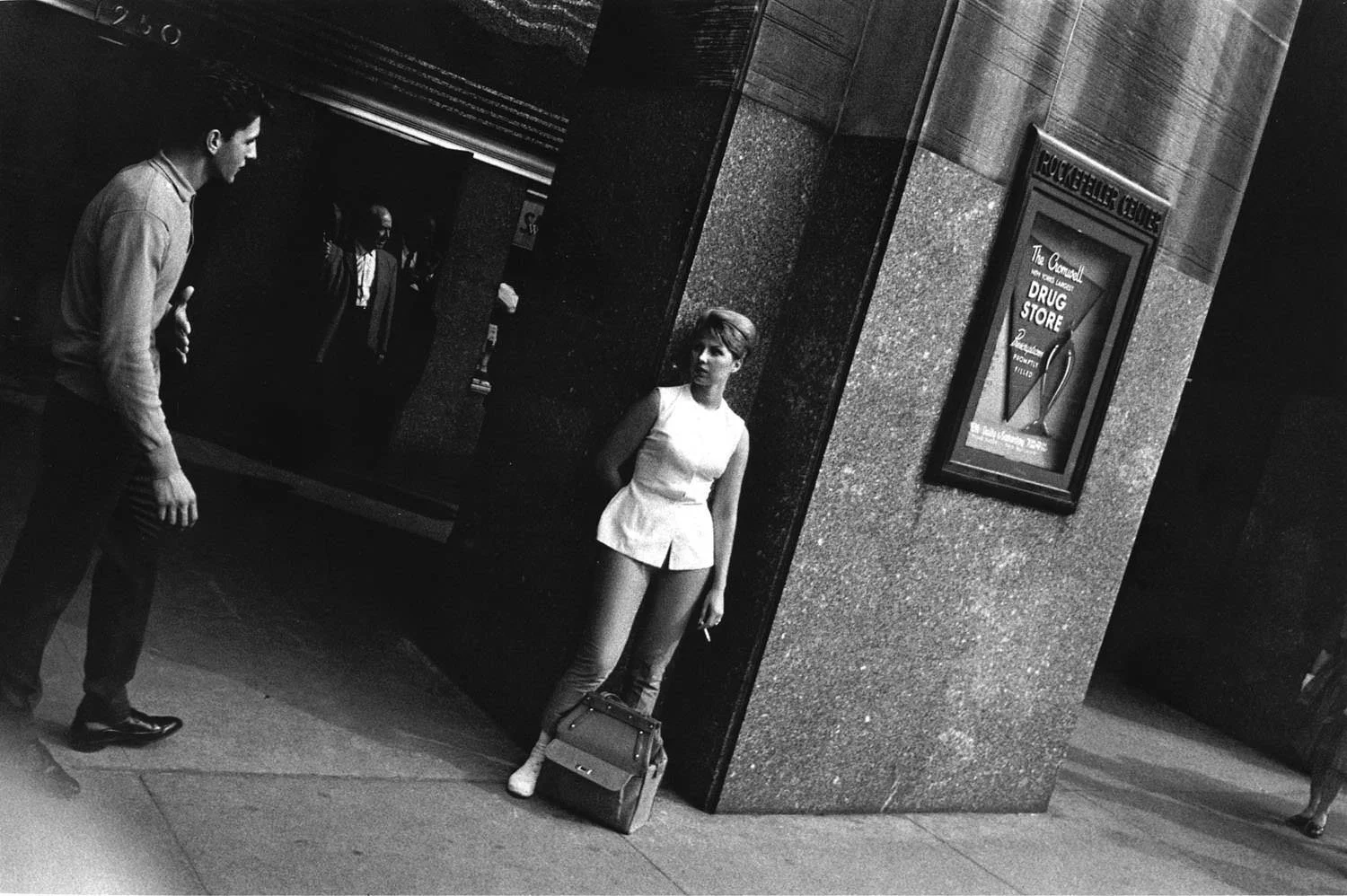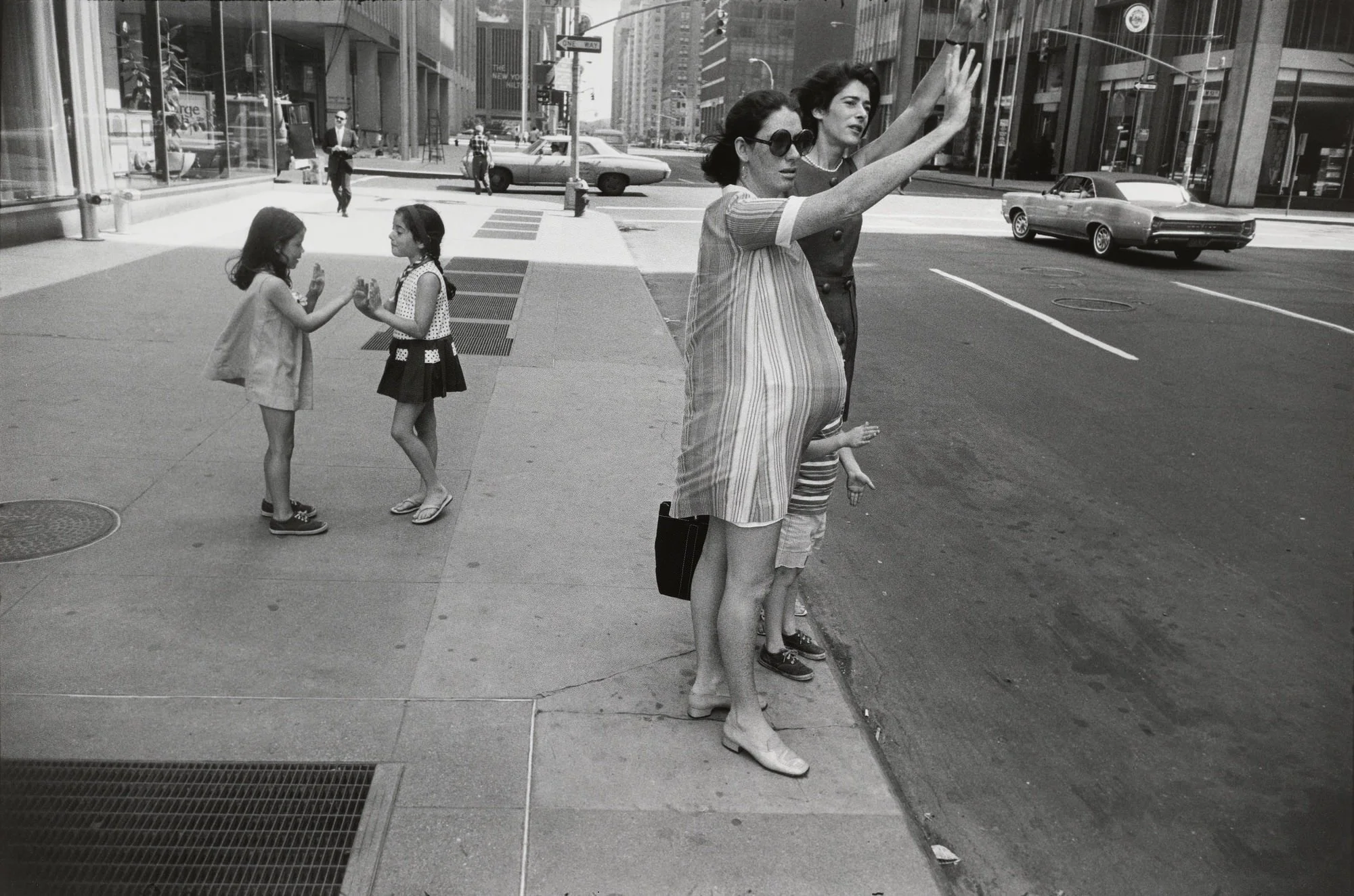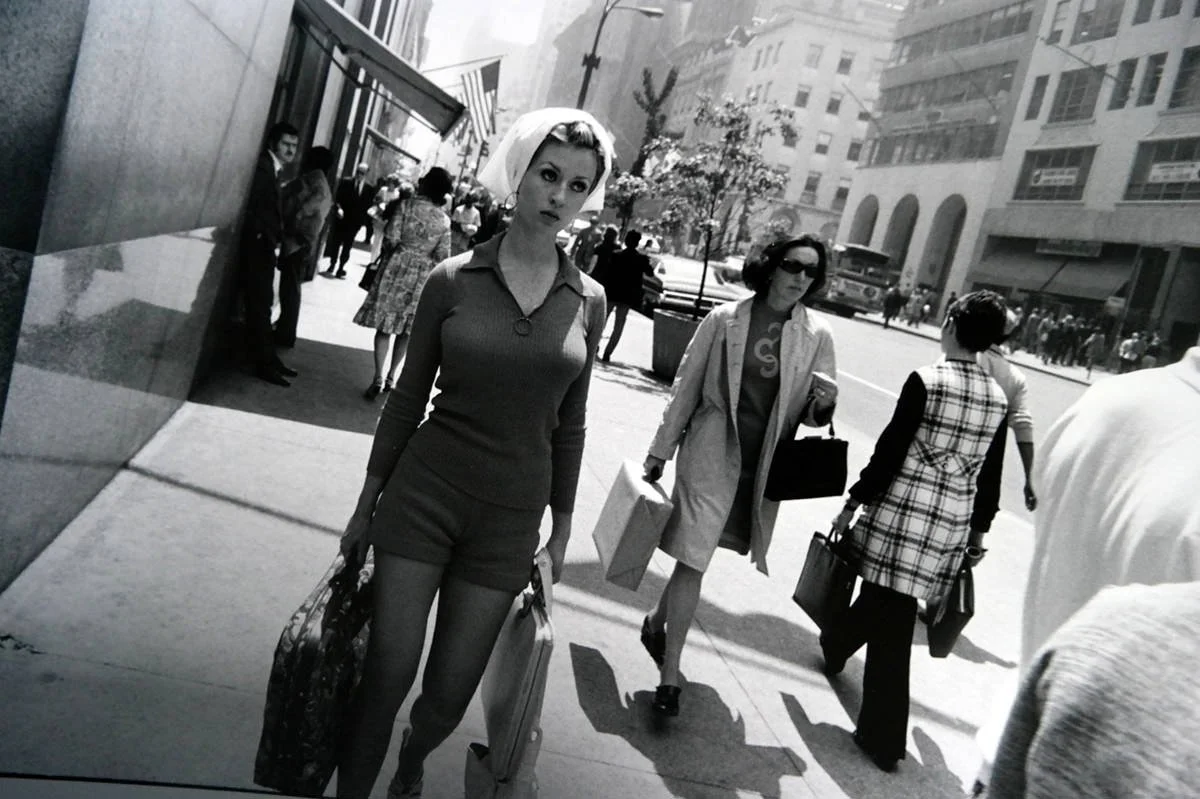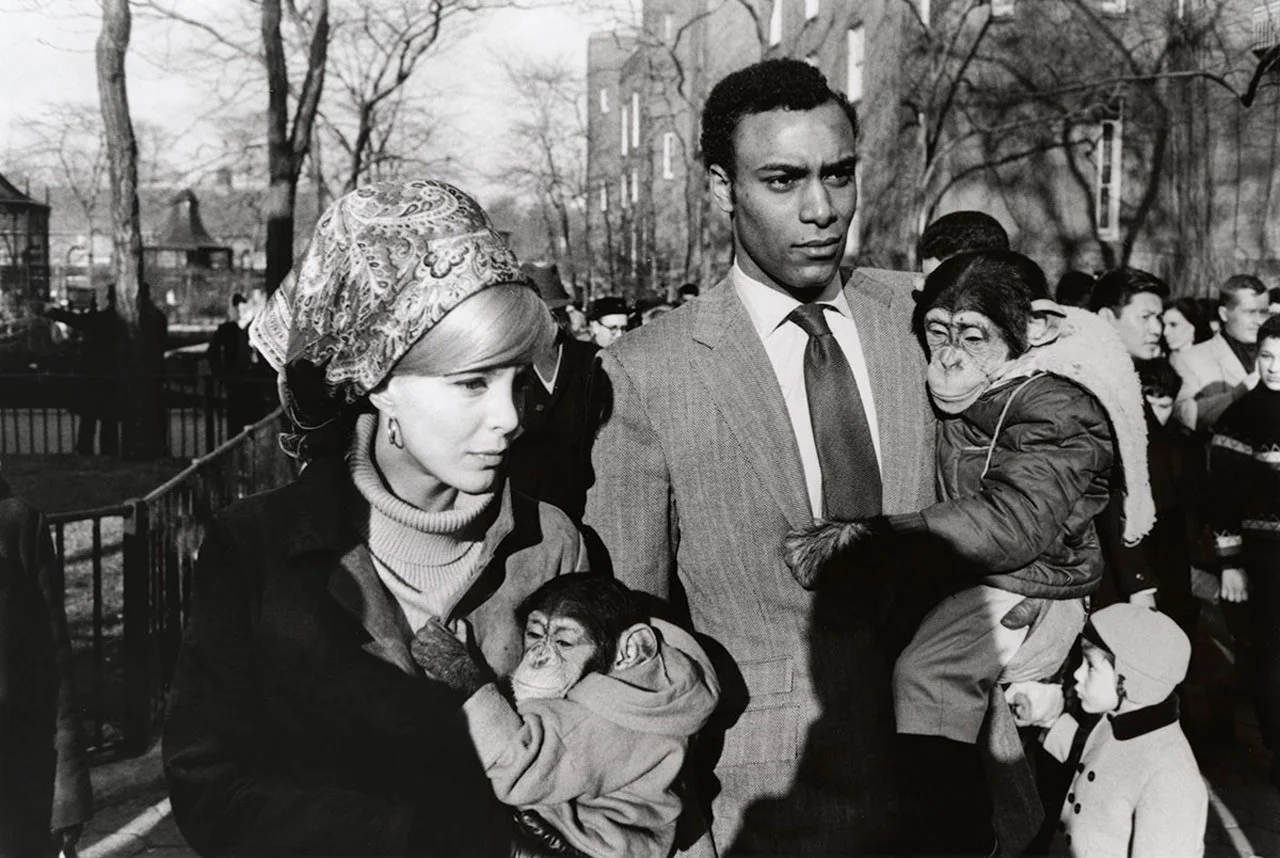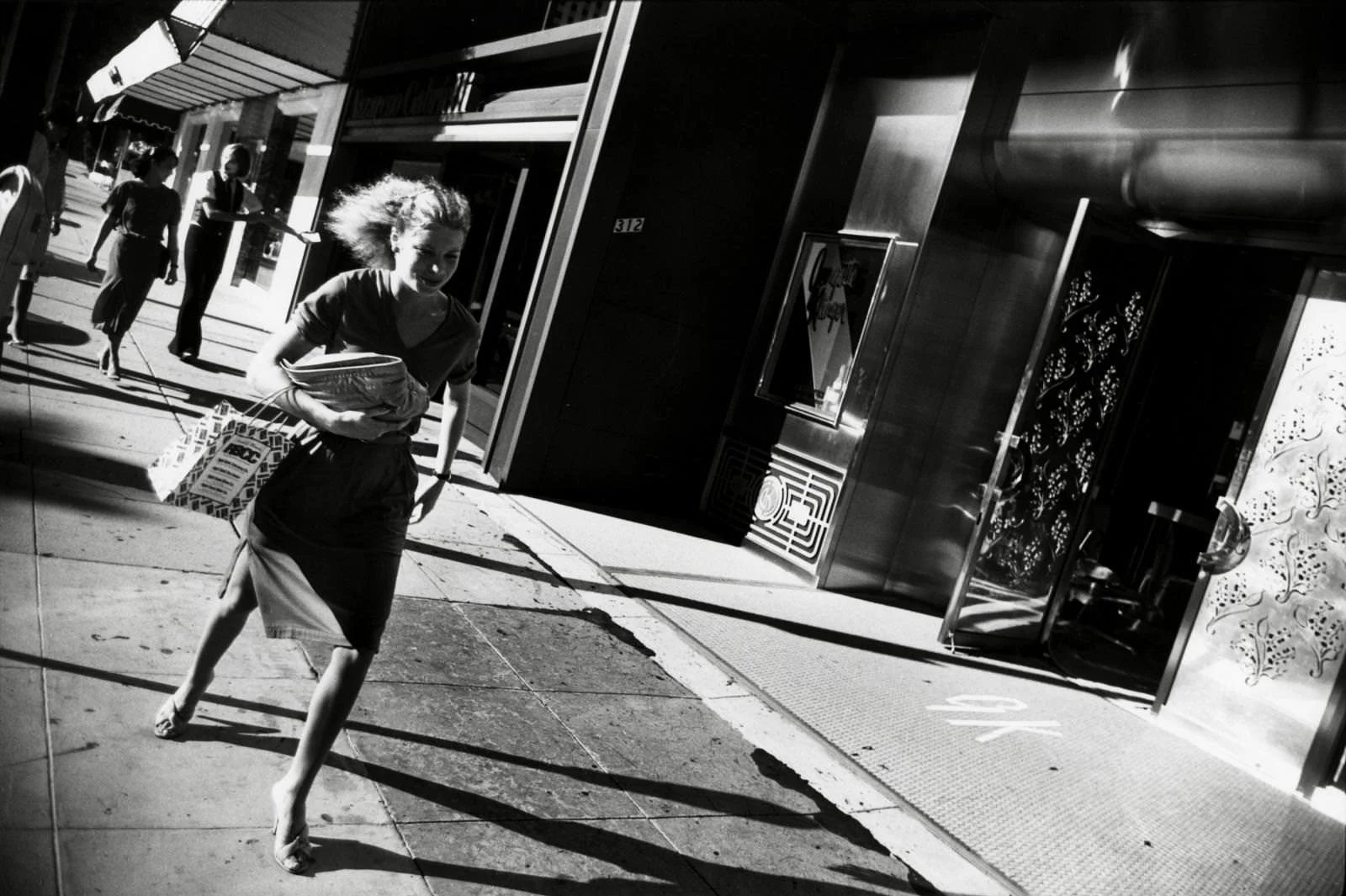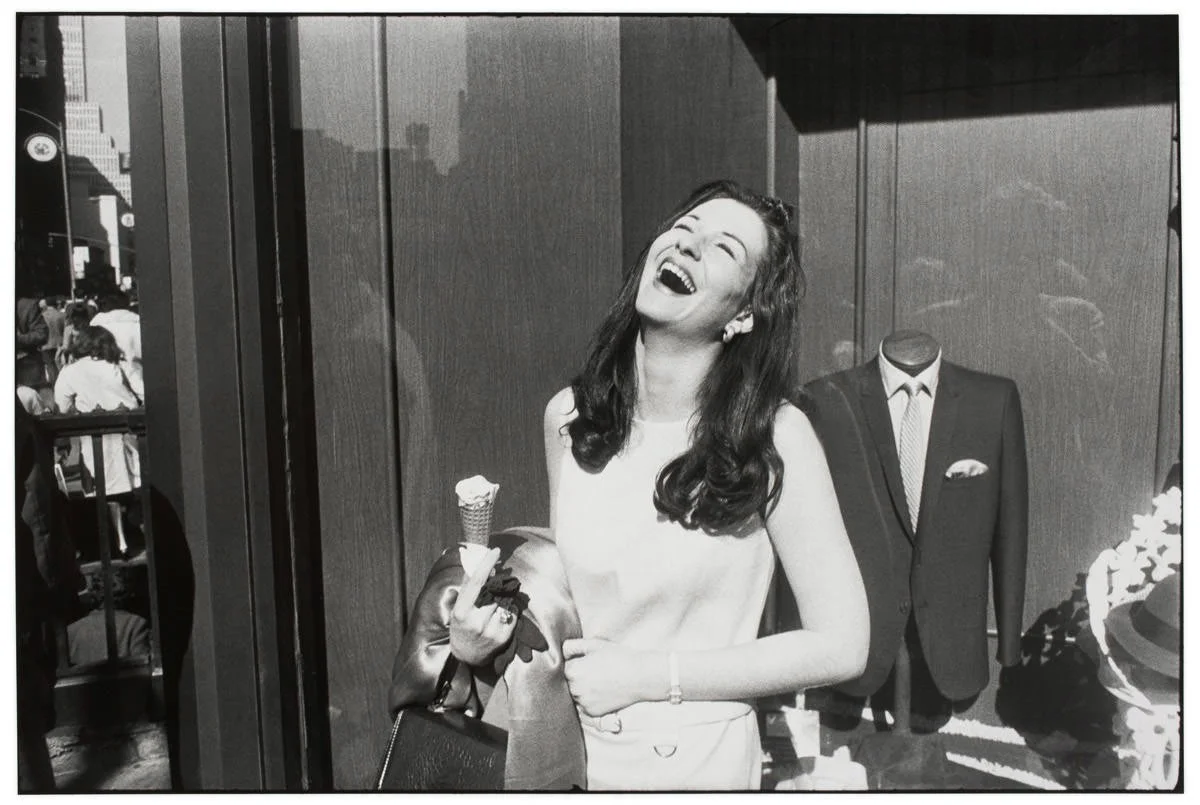Garry Winogrand: Life Through the Lens
Garry Winogrand was born in 1928 in the Bronx, New York, where he lived and worked for most of his life, establishing himself as a prominent photographer.
After a brief period of studying painting at Columbia University, he discovered photography and dedicated himself to it relentlessly until his untimely death at the age of 56.
For several years, Winogrand worked as a freelance photojournalist and advertising photographer. Eventually, he focused entirely on documenting the everyday life of his city through his lens.
Garry Winogrand. Radio City. 1961
Universally recognized as one of the leading figures of American street photography in the 1960s and 1970s, Winogrand disliked labels, especially the term “street photographer.” He saw himself simply as a photographer. His extensive and detailed body of work captured everyday moments on the streets of America, particularly in New York and Los Angeles, where he relocated in 1978.
In the early 1960s, his style and themes gained recognition. By 1963, his work was already being exhibited at the Museum of Modern Art (MoMA). The museum later showcased more of his projects, including *The Animals* in 1969 and *Public Relations* in 1979.
Garry Winogrand. New Work. 1968
Winogrand’s photographs, instinctive and often composed with daring wide-angle perspectives, draw viewers remarkably close to his subjects. This sense of intimacy does not come from the photographer being invisible. In fact, when observing footage of Winogrand working on the streets (some interesting documentaries can be found on YouTube), one sees the opposite: he never tries to hide his presence. After taking a shot, he often seeks eye contact with his subjects, smiling and interacting with a casual ease that makes his actions appear completely normal.
Garry Winogrand. Los Angeles. 1969
Garry Winogrand. New York.
Interestingly, just a few years earlier, another master of street photography, William Klein, had broken the established norms of photography with his work in New York. Klein rejected the prevailing conventions of the "decisive moment" and the invisibility of the photographer, which were hallmarks of Henri Cartier-Bresson's approach. Klein used bold wide-angle lenses (24mm or 20mm), pronounced grain, and seemingly random framing that defied traditional compositional rigor. In many ways, Winogrand’s work aligns more with Klein’s approach—though he was not familiar with Klein’s work at the time—than with Cartier-Bresson's.
Winogrand cited the work of Walker Evans and Robert Frank as key inspirations. His era was marked by photographic experimentation, with multiple movements simultaneously seeking new ways to document the changing society.
Winogrand’s images reveal a deep observational skill, capturing human character and behavior. His work offers a vivid portrait of an entire era, exposing the virtues and flaws of American society.
Garry Winogrand. Central Park Zoo, New York. 1967
Garry Winogrand. Beverly Hills. 1978
One of the most prolific photographers ever, Winogrand had an insatiable need to photograph. At the time of his death, he left behind an enormous archive of 300,000 undeveloped images. Some of these were later exhibited at MoMA and published in the book *Winogrand: Figments from the Real World*.
This aspect of his voracious image-making and his tendency to leave much of his work undeveloped recalls the figure of Vivian Maier, his artistic parallel in many ways.
Garry Winogrand. New Work City. 1968
As mentioned earlier, Winogrand rejected artistic labels and the glorification of his work. For him, photography was about capturing life without missing a moment of what happened around him. He believed that everything was photographable and did not search for profound artistic or social meanings in his shots. In his view, photographs became separate entities, existing independently from the subjects they depicted.
The documentary *All Things Are Photographable* offers valuable insight into Winogrand’s philosophy of life and work.

